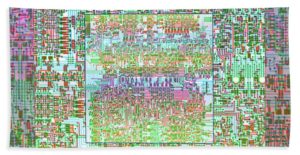NXP P87C453 Microcomputer Flash Code Cloning
When it refers to NXP P87C453 Microcomputer Flash Code Cloning, we need to think about the way of programming the P87C453,
To program the encryption table, repeat the 5 pulse programming sequence for addresses 0 through 1FH, using the ‘Pgm Encryption Table’ levels. Do not forget that after the encryption table is programmed, verification cycles will produce only encrypted data.
To program the security bits, repeat the 5 pulse programming sequence using the ‘Pgm Security Bit’ levels. After one security bit is programmed, further programming of the code memory and encryption table is disabled. However, the other security bits can still be programmed.
Note that the EA/VPP pin must not be allowed to go above the maximum specified VPP level for any amount of time. Even a narrow glitch above that voltage can cause permanent damage to the device. The VPP source should be well regulated and free of glitches and overshoot.
If security bits 2 and 3 have not been programmed, the on-chip program memory can be read out for program verification in order to facilitate the process of NXP P87C451 Chip Heximal Duplication. The address of the program memory locations to be read is applied to ports 1 and 2.
The other pins are held at the ‘Verify Code Data’ levels indicated in below Table. The contents of the address location will be emitted on port 0. External pull-ups are required on port 0 for this operation.
If the 64 byte encryption table has been programmed, the data presented at port 0 will be the exclusive NOR of the program byte with one of the encryption bytes. The user will have to know the encryption table contents in order to correctly decode the verification data. The encryption table itself cannot be read out.



